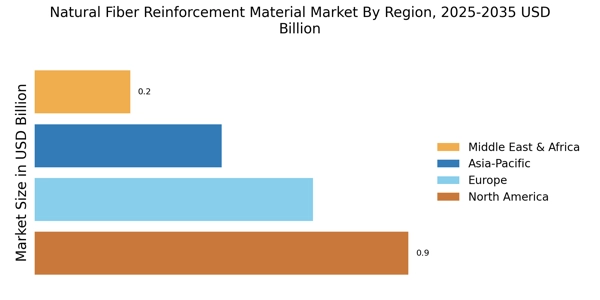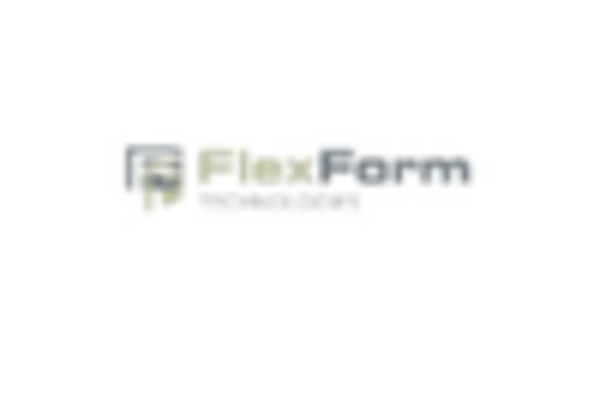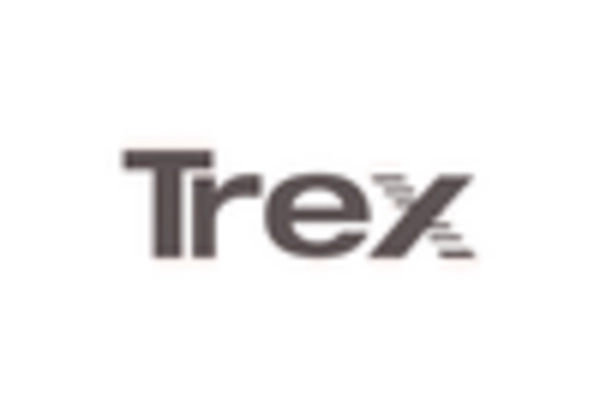Consumer Awareness
The rising consumer awareness regarding environmental issues is driving the Natural Fiber Reinforcement Material Market. As consumers become more informed about the environmental impact of their choices, there is a noticeable shift towards products made from natural fibers. This trend is particularly evident in the automotive and furniture sectors, where consumers are increasingly seeking sustainable options. Market Research Future indicates that a significant percentage of consumers are willing to pay a premium for products that utilize eco-friendly materials, which is likely to encourage manufacturers to incorporate natural fibers into their offerings. This heightened demand could lead to a substantial increase in market share for natural fiber composites, potentially reaching a growth rate of 8% annually.
Cost-Effectiveness
The cost-effectiveness of natural fibers compared to synthetic alternatives is emerging as a vital driver for the Natural Fiber Reinforcement Material Market. Natural fibers are often more affordable to source and process, which can lead to lower production costs for manufacturers. This economic advantage is particularly appealing in industries such as construction and automotive, where cost considerations are paramount. Additionally, the increasing availability of raw materials due to improved agricultural practices is likely to further enhance the cost-effectiveness of natural fibers. As companies seek to optimize their supply chains and reduce expenses, the adoption of natural fiber composites may accelerate, potentially resulting in a market growth rate of around 10% in the near future.
Regulatory Support
Regulatory frameworks promoting the use of sustainable materials are emerging as a crucial driver for the Natural Fiber Reinforcement Material Market. Governments worldwide are implementing policies that encourage the adoption of eco-friendly materials in manufacturing processes. For instance, initiatives aimed at reducing plastic waste and promoting biodegradable alternatives are likely to bolster the demand for natural fibers. The European Union's Green Deal and similar policies in other regions are expected to create a favorable environment for the growth of the natural fiber market. This regulatory support not only enhances market visibility but also incentivizes companies to invest in sustainable practices, potentially leading to a market expansion of around 12% in the next few years.
Technological Innovations
Technological advancements in processing and manufacturing techniques are significantly influencing the Natural Fiber Reinforcement Material Market. Innovations such as improved fiber extraction methods and enhanced composite formulations are enabling manufacturers to produce high-performance natural fiber composites. These advancements not only improve the mechanical properties of the materials but also expand their applicability across diverse sectors, including automotive, aerospace, and consumer goods. The integration of automation and smart manufacturing processes is likely to reduce production costs and increase efficiency, making natural fiber composites more competitive against synthetic alternatives. As a result, the market is expected to witness a surge in demand, with projections indicating a potential increase in market size by over 15% in the coming years.
Sustainability Initiatives
The increasing emphasis on sustainability appears to be a primary driver for the Natural Fiber Reinforcement Material Market. As industries strive to reduce their carbon footprints, natural fibers such as jute, hemp, and flax are gaining traction due to their biodegradable properties. This shift is reflected in the growing demand for eco-friendly materials in sectors like automotive and construction, where natural fibers are utilized to replace synthetic alternatives. Reports indicate that the market for natural fiber composites is projected to grow at a compound annual growth rate of approximately 10% over the next few years, underscoring the potential of sustainable materials in various applications. Companies are increasingly investing in research and development to enhance the performance characteristics of these materials, further driving their adoption.


















Leave a Comment